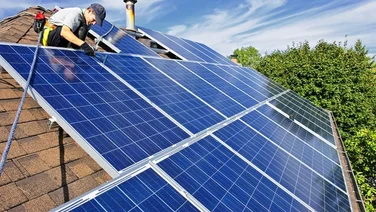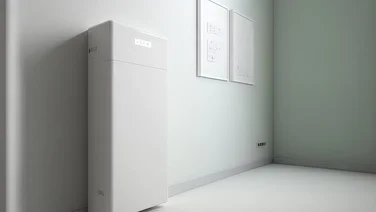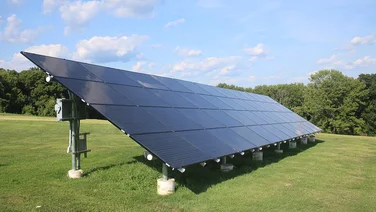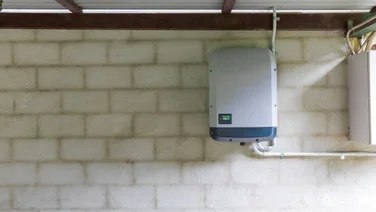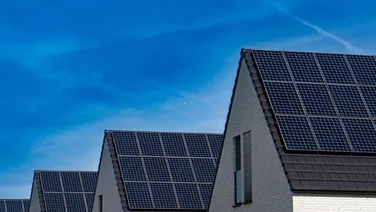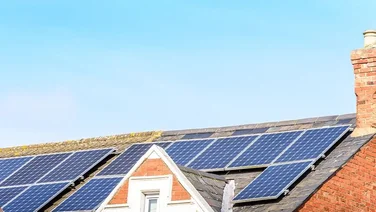- Solar trees are artificial ‘trees’ that have solar panels attached to them
- They are increasingly featured in urban redevelopment projects
- Solar trees require less land than solar panel installations
- Solar trees are constructed using durable materials, such as metal
- Solar trees need sunlight to maximise its effectiveness
Solar trees are a new solar technology and futuristic method of harnessing power for electricity. They supplement and complement existing solar panel technology.
However, the cost of solar remains a barrier for many potential consumers. Currently, domestic solar panel installation costs have averaged £9,180.61, according to the Microgeneration Certification Scheme (MCS).
Although this is lower than its peak in May 2023, at £10,700, the cost is still relatively high, but the good news is that there are grants available to help, like the ECO4 and Eco Flex scheme. But check out our guide: How to get government grants and funding for solar panels, for a full rundown on eligibility. These grants can also be used on solar trees.
Within solar energy are solar trees, which is an emerging technology. Below, we’ve created a full guide to solar trees, covering the basics, like how they work, the benefits, drawbacks and affordability.

What is a solar tree?
A solar tree is exactly what it sounds like: an artificial tree equipped with solar panels that generate and store clean energy from the sun. It is just one of many solar technologies being developed and helping bring down the average electricity bill in the UK.
Typically constructed from metal, as well as carbon fibres and polymers, solar trees are designed to be both efficient and visually pleasing.
They are increasingly featured in urban redevelopment projects because they utilise space more effectively than traditional solar panel installations.
Solar trees are especially valuable in cities, where space is limited, and contribute to the sustainable-city revolution by combining functionality with aesthetic appeal.
An excellent example of solar tree implementation is the famous Gardens by the Bay development in Singapore.
In its Supertree Grove, 11 out of 18 man-made trees are equipped with solar panels, which power the area’s lighting and water technology systems used in nearby conservatories.
These solar trees have become central to the Gardens’ status as a tourist attraction, featuring elevated walkways, observation decks, and regular music and light shows.
While not all solar tree installations are as grand in scale, they play a crucial role in raising awareness of the emerging tech.
Most installations can be found near parking lots, schools, or parks, serving the same purpose of generating energy to power nearby facilities and establishing a self-sustaining infrastructure.
This makes solar trees a key component in shaping the future of sustainable cities.

What are the benefits of solar trees?
Solar trees offer several benefits, from helping to maximise space built-up environments, to charging electric cars and promoting awareness of sustainable living. Let’s examine the four main benefits in more detail.
Efficient use of space
Solar trees save ground space compared to traditional solar panels or ground mounted solar panes, as they are naturally quite small and thin.
As a result, solar trees require less land than solar panel installations, especially considering their ability to optimise sun exposure through the placement of photovoltaic cells.
This makes solar trees valuable in cities especially, as space is limited. Similar to how skyscrapers and high-rise buildings make the most of available space, solar trees enable efficient utilisation of solar power.
The shade provided by solar trees also helps counteract thermal energy reflected off common urban surfaces like asphalt, contributing to climate change mitigation.
With more countries adapting solar power in a bid to become greener, we can expect to see new innovations popping up soon – some farms have even started turning their fences into solar fences.
They’re multi-purpose
One of the significant strengths of solar trees is their versatility in generating electricity for various purposes. Solar trees can power homes, offices and commercial enterprises.
However, two standout applications are electric car charging and urban lighting.
Considering the design and structure of lamp posts, solar trees can seamlessly replace them, while generating all the required electricity. This makes solar trees a natural fit for parks, plazas and other public spaces that require well-lit environments during the night.
Car parks, where electric car charging is increasingly necessary, are also ideal locations for solar trees. These outdoor public spaces present an even stronger case for solar trees, bringing us one step closer to building truly sustainable cities of the future.
They promote solar power
Solar trees have the ability to create a sense of excitement and awareness about sustainability and renewable energy.
They are not only visually striking, but have become strong talking points wherever they’re installed. They possess substantial creative potential, as demonstrated by Singapore’s Bay Gardens.
Even in more low-key settings, solar trees serve as focal points for local communities to engage in discussions about sustainability.
The presence of solar trees signifies the integration of sustainability into our daily lives. This means that there is a potential cascading effect, which has led to increased awareness and further action, such as more recycling.
They don’t need much maintenance
Solar trees are constructed using durable materials, such as metal. As a result, they require minimal maintenance beyond occasional cleaning to remove debris from the panels.
As a reference point, regular solar panels and solar roof tiles are recommended to have at least an annual clean.
The exact maintenance requirements for solar trees may vary depending on their location and specific conditions, but this gives you an idea of what to expect. Minimal maintenance also helps keep costs down in the long run, in keeping with the overall notion of solar trees as an investment.
You can learn more about this by visiting our complete guide to solar panel maintenance.
What are the drawbacks of solar trees?
Solar trees, as mentioned above, is still a relatively new technology so there’s likely to be a few kinks to work out. And like most green tech, there will be some drawbacks to installing solar trees over other products on the market.
They can be expensive
While solar panel costs have significantly decreased over the past few years, the cost of solar trees is still high.
A 1.8kW solar tree costs, on average, around $40,000 (£31,259.40), while a larger 5.4kW system can reach costs of around $80,000 (£62,518.80). Commercial-grade solar trees can cost around $100,000 (£78,148.50).
You’ll notice these prices are considerably higher than solar panels. The average 3.5kW solar panel system will cost around £7,000.
They’re weather dependent
Solar energy can still be generated in all weather conditions, whether sunny, cloudy or rainy. However, its efficiency does drop and solar panels and trees do need sunlight to maximise its effectiveness. What’s more, solar energy cannot be collected during the night.
Storage can also be costly
Storage of solar trees can become quite expensive and has to be used right away. You can, however, store it in large batteries, which can be charged during the day, with the energy used at night. This can be a good option for ensuring you’re using solar energy all day long, but costs can add up.
It’s typically cheaper and smarter to use solar energy throughout the day and utilise the national grid during the night. It’s worth noting you can only do this if your solar tree system is connected to the national grid.
Solar trees vs solar panels
Solar trees and solar panels essentially serve the same purpose, but solar trees require a much smaller footprint to generate renewable energy.
The biggest difference comes down to cost. As we’ve already mentioned, solar trees are more expensive and can be a bit of an eye sore in your garden or front lawn, even though they are quite thin in nature. Solar panels, however, are on your roof, so you can almost ignore their presence and reap the benefits.
Overall, the technology around solar trees is still relatively new. However, as the technology improves and we see more investment and demand, they’ll likely improve. They’ll also receive updates to look more like normal trees and blend in with your other plants.
Summary
- Typically constructed from metal, as well as carbon fibres and polymers, solar trees are designed to be both efficient and visually pleasing.
- Solar trees are not yet ready to replace solar panel installations, but as investment grows, this will change.
- Solar trees are an innovative way to maximise the solar energy potential.
- Solar trees save ground space compared to traditional solar panels, as they are naturally quite small and thin.
- Cost remains a huge obstacle, with the average solar tree costs starting from £31,000.


